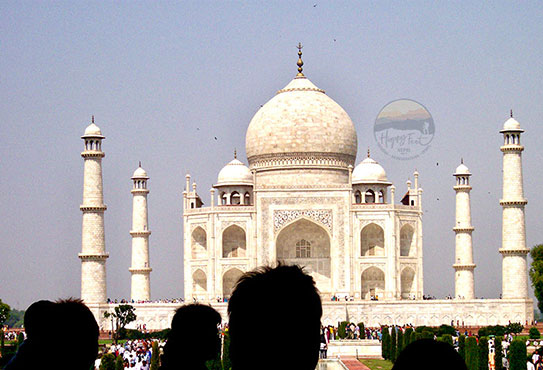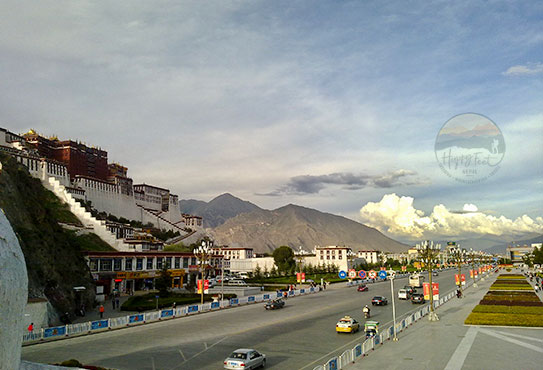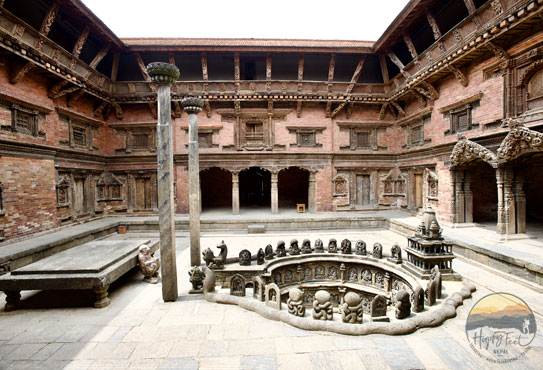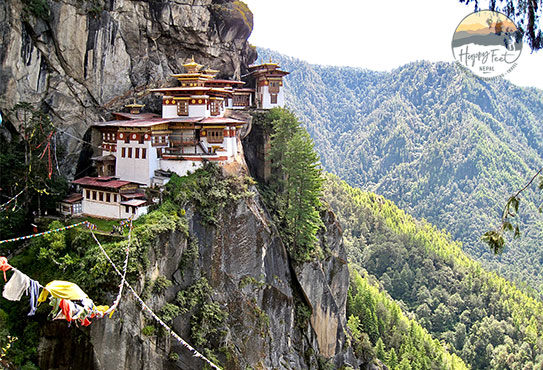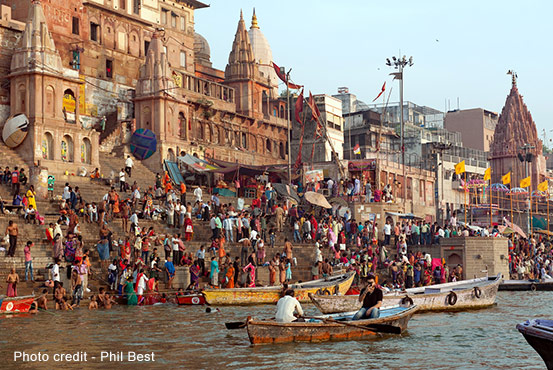Sunday - Friday: 9 AM - 4 PM
India and Nepal Tour, an incredible tour
India and Nepal Tour offers a beautiful tour combining the deserts of India and the Himalayas of Nepal, filled with incredible histories and age-old glories.
Tour Costs 2370$ Per person!
Trip highlights
Old Delhi, New Delhi, Jaipur, Taj Mahal, Varanasi, Soymabunath Stupa, Kathmandu Durbar Square, Pashupatinath temple, Boudhanath Stupa, medieval town of Bhaktapur, Patan Durbar Square and Panoramic Mountain flight over Mount Everest!
India and Nepal Tour offers a beautiful tour combining the deserts of India and the Himalayas of Nepal, filled with incredible histories and age-old glories. In this shortest trip itinerary, we discover the fabled palaces and temples in the desert of Rajasthan, its mythical cities, and the legendary history-filled Kathmandu valley with ancient Buddhist stupas and Hindu temples with a magnificent view of the Himalayas. In India, the visits include Old Delhi, New Delhi, Jaipur, Agra with Taj Mahal, Varanasi, on the shore of the mythical River of the Ganges, and in Kathmandu includes, Soymabunath Stupa, Kathmandu Durbar square with the living goddess, Pashupatinath temple, the holiest temple for Hindu World, Boudhanath Stupa, the Mecca of the Buddhist, Bhaktapur, the museum in the open air, and the Lalitpur, the city of Arts! For not taking your time to read; in short, the essence of the entire visit cannot describe in words.
Arrive at Delhi Airport, customs and immigration formalities and claim your baggage, which takes some time. Upon exiting, the arrivals get a traditional welcome from the Happy Feet Nepal representative and transfer to the hotel (room check-in is available from 12:00). Meet the guide and half-day visit to Old Delhi, including the Jama Masjid or Friday Mosque, the largest mosque in India and the Red Fort, built over ten years in the 17th century in the rule Mughal empire. Finalize the visits and drive to the hotel. Overnight at the Jaypee Siddharth, a 4-star hotel (Deluxe Room). NOTE: Red Fort remains closed on Mondays.
242km – 5h30. Full board (Breakfast, lunch and dinner).
Breakfast at the hotel. Then check out the hotel and drive to Mandawa, situated in the heart of the Shekhawati region of Rajasthan. Mandawa is known for its frescoes and paintings. Along the way, we will pass through typical Indian villages. Arrive in Mandawa and get distributed in the rooms. In the afternoon take a walking tour, without a guide, of the colourful villages with a wide variety of shops where we can buy various things—dinner and overnight at the Desert Resort, a 3-star heritage hotel.
255km – 5hrs. Breakfast included.
Breakfast at the hotel. Today we drive Khimsar passing through the heart of Rajasthan. Khimsar is known for its magnificent Fort built by the Ranas of Mewar. Arrive at the hotel and get checked into the rooms. In the afternoon, explore the Fort and surrounding towns. In the evening, we will take a walking tour of the small village to observe the area’s rural lifestyle—dinner and overnight at the Khimsar Fort, a 3-star Heritage Hotel.
190km – 4hrs. Breakfast included.
Breakfast and drive to Pushkar, famous for its annual fair, which coincides each year from October to November. Thousands of devout Hindus and tourists gather to bathe in the sacred waters of Pushkar Lake. This religious festival is also an excellent occasion to enjoy the famous camel market. According to myth, the Pushkar lake emerged from a lotus flower in the hand of Brahma. Arrive and visit the sacred Lake and the Temple of the Brahma at one end of the town. According to mythology, Brahma dropped a feather and had a temple built where it landed, and that place was Pushkar. Overnight at the Jagat Palace, a 3-star hotel (super deluxe room).
145km – 3hrs. Breakfast included.
Early morning, walk to the top of the hill to enjoy a panoramic view of Pushkar and see the sunrise. Then return to the hotel and have breakfast. Check out formalities and depart for Jaipur by road, about a three-hour drive. Arrival and get distributed into the rooms. Jaipur, the capital of Rajasthan, still seems cradled and well-protected. Jaipur is named after Maharaja Jai Singh, who became King of Amber in the early 1700s at the age of thirteen. Despite his precocious age, he was a distinguished student adding to his credentials the careers of architecture and astronomy. He designed the new capital with exquisite pink terracotta buildings, which gave it the name “pink city” with the colours pink and orange as predominant colours; the sunset effect is magical. Rest of the day, you are free to explore the city and visit the local market without a guide. Overnight at Shahpura House, a 4-star Heritage Hotel (Suite room).
Breakfast included.
After breakfast, departure by road to the Amber Fort. Amber was the capital of Rajasthan for six centuries and the core land of Rajput history. Nowadays, the city is practically abandoned. The palace stands on the slope of a steep hill behind Maota Lake, retaining an air of great beauty. The visit to the palace can be done on foot or by an elephant back safari. The Fort features alabaster panels. Return to Jaipur. In the afternoon, a half-day city tour, including the City Palace, where the current Maharaja still lives in one of its wings, dates back to the 18th century with a mixture of Rajput and Mughal styles. The Jantar Mantar, a great astronomical observatory built in 1728 and Hawa Mahal or Palace of the Winds that we will see from outside, is Jaipur’s most famous monument of Rajput architecture and consists of 5 floors, of which only the multi-windowed façade remains. Overnight at Shahpura House, a 4-star heritage hotel (suite room).
NOTE: The Archeology department has limited the number of trips and times to go up to Amber Fort by elephant, so it is possible that Amber Fort cannot be accessed on the day of the visit, and we have to do it by jeep. Therefore, an elephant back tour cannot be guaranteed.
245km – 4h30. Breakfast included.
Breakfast and drive to Agra, en-route visit Abhaner without a guide, originally called Abha Nagri, which means “The Shining City”. Abhaner has “Baoris” (stairwells), which are the invention of the natives to collect rainwater, and we will also visit Fatehpur Sikri, the “ghost city”. The city’s history began when Akbar, desperate for not having an heir, decided to see a Muslim holy man, Salim Chisti, who blessed Akbar. Therefore, the emperor had a long-awaited son, whom he named Salim, in honour of the Muslim saint. Salim would one day take the throne from Jahangir. The grateful Akbar decided to move his capital to the small town where he died in 1569. Fatehpur Sikri stands on a rocky ridge for 2 miles. He raised his hand at the foot of the cliffs and created an artificial lake that extended 20 miles in all directions. Finalize the visit and continue by road to Agra, another 50 kilometres. Arrive and get distributed into the rooms at the Hotel Clarks Shiraz, a 4-star hotel (superior room).
Breakfast included.
Agra is famous for its Seven Wonders of the World – the Taj Mahal. Agra was the ancient capital of the Mughal Empire, which is reflected in this city since they were passionate about buildings, these being the finest in the world.
In the morning, visit The Taj Mahal, one of the world’s most beautiful buildings. Called “A Dream in Marble,” the Taj Mahal was built by Shah Jah as a memorial to his queen Mumtaz Mahal. Shah Jah built the Taj to enshrine the body of his favourite wife, Mumtaz Mahal (the elect of the palace), who died shortly after giving birth to their 14th child in 1631. The Taj Mahal, the most extravagant monument ever built monument of love constructed by 20,000 men from Asia, commenced in 1632 and was completed in 1653. The marble used for the monument was brought from Makrana, near Jodhpur, and precious stones of amethyst, malachite, onyx, lapis lazuli, turquoise, jade, crystal and mother of pearl were brought from Persia, Russia, Afghanistan, Tibet, China and the Indian Ocean. The Taj Mahal is located at the banks of the river Yamuna, which reflects in the waters of Yamuna if you watch from nearby Agra Fort.
After the visit, return to the hotel for breakfast and continue visiting the city of Agra, including Agra Fort – its construction was started by Emperor Akbar in 1565 when he was just 23. Within the Fort are several fascinating buildings, including the Octagonal Tower, the Jehangir Palace built by Akbar for his son Jehangir, and the Pearl Mosque made of marble. Then there is the Hall of Public Audience, best known for its Peacock Throne and white marble-built private palace known as the Khas Mahal. In the late afternoon, transfer to Tundla station to take the night train to Varanasi (leaves at 8:40 p.m. and arrives at Banaras at 6:15 a.m.)—night on the Poorva Express train.
NOTE: Taj Mahal is closed on Fridays. The hotel rooms get booked for day use until the transfer to the train station.
Breakfast included.
Arrive in Varanasi at the Mughal Sarai station. Assistance on arrival and transfer to the hotel (rooms are usually unavailable until mid-morning)—breakfast and a half-day city tour. Varanasi, later the religious capital of Hindu India and a microcosm of Indian life, is the sacred place where Buddha preached to his five disciples on the four noble truths. Nobody knows the birth of time of Varanasi. When Buddha arrived in 500 B.C., he found an ancient settlement. We will visit the Mother India Temple, Durga Temple, Sankat Mochan Temple, Birla Temple and the Banaras Hindu University, among other exciting places this authentic city has. In the afternoon, we visit the old part of the city and take an Aarti tour at sunset. We drive to the city for the Arati tour and then walk through the alleys until we reach the Burning Ghat, where we take a boat to see the Aarti Puja and sunset from the Ganges River. Hundreds of devotees make offerings to the Sun God to eliminate all their sins in this sacred river (Arati time is from 6:30 to 7:30 p.m.). Return to the hotel, walking through the old part of the city and a rickshaw ride to the hotel—accommodation at the Hotel Rivatas by Ideal, a 4-star hotel (deluxe room).
In the early morning, take a boat trip on the Ganges River to see the sunrise, observe the temples along the river, and the rituals of hundreds of pilgrims who flock here daily and observe the purifying bath in the Ghats of River Ganges. Disembark and walk through the narrow streets, watching how the pilgrims worship in the Golden Temple; tourists are allowed to see it only from outside after purifying themselves in the sacred river.
10km from Varanasi is one of the foremost Buddhist centres. Varanasi is the holy site where Lord Buddha preached his first sermon on the four noble truths or, in religious language, the Wheel of Law (Maha-Dharmachakra-Pravartan) set in motion enshrining the principles of his teaching into laws. Two hundred years later, in the third century B.C., the Great Mauryan Emperor Ashoka spread the Buddha’s teaching of love and compassion throughout his vast empire, including Srilanka, Bangladesh, and neighbouring countries. He built 84-thousand massive stupas, including in Nepal. And built countless viharas and monasteries and made India the only centre of the Buddhist world until the 15th century. From the third century B.C. to the 11th century A.D., several important Buddhist structures were raised at Sarnath, and today it presents the most expansive ruins among places on the Buddhist trail. There are two ancient stupas for ceremonial public worship, and their present names are Dhamekh and Dharmarajika. Jagat Singh of Varanasi dismantled Dharmarajika in the 18th century. Emperor Ashoka erected several monuments here. Chaukhandi Stupa comes first. Akbar repaired the same to commemorate his father’s visit to Sarnath.
Sarnath Museum – has a rich collection of Buddhist sculptures and images of numerous Buddha and Bodhisattva, considered amongst the finest specimens of Buddhist art. It also has the magnificent Lion Capital, India’s National Emblem. Overnight at the Jaypee Siddharth, a 4-star hotel (Deluxe Room). Breakfast included.
After breakfast, transfer to Varanasi airport for a regular flight to Delhi. Arrival and departure for a half-day tour of New Delhi, visiting Humayun’s Tomb, Qutub Minar and the India Gate and Government Building, in line with the Khan trail en route to Bangla Sahib, a famous Sikh Temple. After the visit, return to the hotel. The rest of the day is free for shopping or last-minute things in India. Overnight at the Jaypee Siddharth, a 4-star hotel (Deluxe Room). Breakfast included.
Breakfast included.
Breakfast. Early in the morning, transfer to Delhi airport for a flight to Kathmandu. Arrive in Kathmandu, customs and immigration formalities and claim your baggage, which takes some time. Upon exiting, the arrivals get a traditional welcome from the Happy Feet Mountaineers representative and transfer to the hotel in Kathmandu; room checking is available only at 1:00 p.m.
With three medieval cities, Kathmandu, the capital and heart of the country, symbolizes Nepal’s everything. Having lived through the several ruling dynasties of Buddhists and Hindus, the culture and society of Kathmandu Valley evolved through time to give it more than a unique feature. Today it is an urban city, and still rapidly increasing, that has its ancient myths and, at the same time, is testimony to the greatness of people who have lived there for time immemorial.
After lunch, a half-day guided city tour starts with Swayambhunath, dating back more than 25 centuries and one of the world’s oldest Buddhist chaityas. The great stupa of Swayambhunath is a landmark wonder of Nepal and is listed as a World Heritage Site. The all-seeing eyes of Lord Buddha keep an eternal watch over the valley. Swayambhu is located west of Kathmandu proper on a hillock rising about 500 feet above the valley floor level. The hill is a mosaic of small chaityas and pagodas—one Hinayana (Theravada) and five Mahayana (Vajrayana)—temples. The site offers a complete view of Kathmandu Valley, its surroundings, and the northeastern Himalayas.
After Swayambhu, drive to Basantapur Durbar Square, also known as Kathmandu’s Durbar Square. The tour of the Kathmandu Durbar Square, classified as a World Heritage Site, teems with activity. It features countless monuments, including the House of the Living Goddess (Kumari Ghar) and the ferocious Kal Bhairab and kneeling Hanuman (the red-capped monkey god) statues.
The architecture represents some of the greatest achievements of the medieval Malla era. The stroll leads around the square past a host of pagoda temples (including the grand temple of the goddess Taleju) and a window framing Shiva and Parbati sitting together viewing the scene.
The square is full of colourful life centred on the Kasthamandap rest-house. Said to have been built with wood from a single tree (and the origin of Kathmandu’s name), it is now reconstructed in the wake of the 2015 earthquake. Then visit the Temple of Kumari; the residential quarters of the Living Goddess called Kumari (‘chaste virgin’) consists of a traditional building complex featuring carved wooden balconies and windows.
Also impossible to overlook are the great bell and large drums. The palace’s main golden gate is guarded by the monkey god Hanuman, the faithful devotee of Lord Ramachandra, the hero of the epic Ramayana.
Finally, pass through the Hanuman Dhoka: the historic seat of the past Malla and Shah dynasties. The historic temples and palaces epitomise the religious and cultural lifestyle of the rulers. Among the most interesting things to view is the Taleju Temple, built by King Mahindra Malla in A.D. 1549 and a historical museum containing artefacts of past Shah kings.
We finalise with the tour and ride a rickshaw and roll through its old city market centre, the Ason Bazaar, seeing what the Nepalese people buy and sell in their daily run. The rickshaw drops you at your hotel or Thamel, the tourist hub of Kathmandu with multi choices of restaurants and shops.
Overnight at the Shanker Hotel, a 4-star hotel.
Breakfast and a full day of visits to Kathmandu, starting with Pashupatinath Temple. A Hindu pagoda temple with gilt roofs carved with silver doors dedicated to Lord Shiva, situated at the bank of the holy Bagmati River and regarded as among the most sacred temples of the Hindu religion, Pashupatinath is the focus of pilgrimages culminating in the day of Shiva Ratri (the marriage anniversary of Lord Shiva and the goddess Parvati). Pashupati is also the cremation ground in the ghats (cremation group) along the bank of River Bagmati, where the recently deceased Hindus of the Valley are cremated.
After the visit, we take a 13 kilometres drive to Bhaktapur, east of Kathmandu. Its original name is, Bhadgaon, or the village of Devotees is one of the living museums of Kathmandu Valley. Bhaktapur is filled with the 55-windowed Royal Palace, the Palace of the Kumari, the temple of Taleju, the temple of Pashupati, the main square of Taumadhi Tole, Nyatapola Temple (the most imposing the tallest such architecture in all of Nepal), the temple of Akash Bhairab (the second most important temple of Bhadgaon), the Dha Hateya and the Square of the Potters. UNESCO recognises Bhaktapur as a World Heritage Site.
In the evening, visit the Boudhanath, the largest Buddhist shrine in South Asia. This ancient Chorten was built in the 5th century A.D. by King Manadeva. Three terraces lead up through water, fire and air segments to the pinnacle, symbolic of space and the highest spiritual attainment. The whole is surrounded by a circle of shops which form a small Tibet. Lord Buddha’s four pairs of eyes flash vividly into the cardinal directions, radiating the message of Mahayana Buddhism, known as Lamaism in Sikkim, Ladakh, Bhutan and Tibet.
Overnight at the Shanker Hotel, a 4-star hotel. Breakfast included.
Early in the morning, take a scenic mountain flight to enjoy the views and panorama of a 360-degree wide range of Himalayan peaks from Manaslu, Ganesh, Langtang, and Jugal Himal, Pumori, Lhotse, Nuptse, Mt. Everest and as far towards Mt. Makalu and Kanchenjunga towards far east. Most mountain flights operate early morning, from 6:30 a.m. to 9 a.m., with window seats that last an hour. You can observe a mighty chain of Himalayan peaks both ways on the flight, never missing the core and highlight of mountain flight. Finally, land back at the airport and drive to the hotel.
Then visit Patan; its ancient name is Lalitpur, the city of arts, containing ancient architectural masterpieces, including Patan Durbar Square, Golden Temple, Krishna Temple, and Thousand Buddha Temple, which are absolutely packed with temples. We also visit the Patan Museum, one not-to-miss site, which explains Buddhism and Hinduism in detail. Finalize the tour and drive back to Kathmandu. The rest of the day is free on your own. The evening is for a farewell dinner at a local restaurant with a Nepali cultural dance show.
Breakfast and the rest of the day are leisure on your own. The Representative of Happy Feet Nepal will arrive at your hotel with transport three hours before your departure flight time. Get escorted from the hotel to the International Departure Terminal, see off formalities, and go through the immigration and departure. The intuitive journey to the Deserts and Himalayas is over!
